- Home
- slideshows
- miscellaneous
- This $450 semi-automatic espresso machine is a commercial-grade workhorse for a fraction of the price - here's how it works
This $450 semi-automatic espresso machine is a commercial-grade workhorse for a fraction of the price - here's how it works
The design of the Classic Pro

The specs
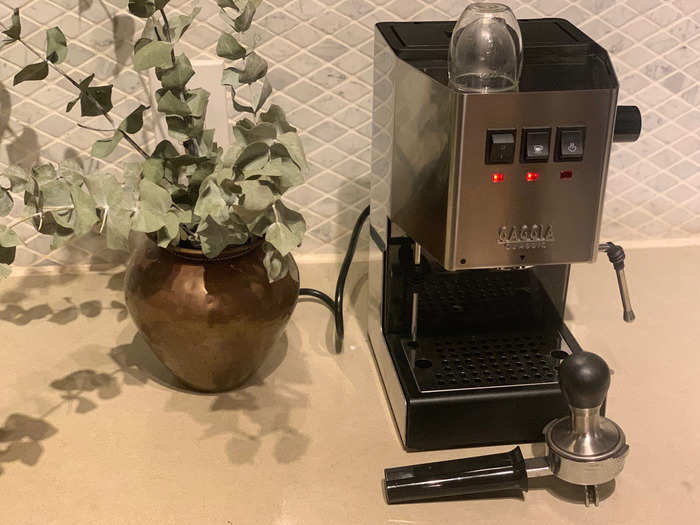
This machine is almost foolproof. There are only three two-way switches and a dial to turn the frother on and off. The largely plastic-free machine is compact and wrapped with brushed stainless steel housing. I, for one, don't have a lot of counter space in my kitchen, and while you still have to have a burr grinder (or buy pre-ground coffee, which we don't recommend because you're beginning to defeat the purpose of this nice machine), I've found it a lot easier to have this small machine and a grinder off to the side or on the window sill so that I don't have a big swathe of space eaten up right in the middle of (or anywhere on) my counter.
Features that make this a more professional machine are the 1600 watts of power (equivalent to the Breville Barista Express, our favorite espresso machine in our full guide), a three-way solenoid valve that prevents pressure from building up in the group head, which makes things a lot cleaner, and even less dangerous. Without one, taking the portafilter out too soon can result in a scalding spray of soppy espresso grounds, or stored water in the group head, which could also mean coffee grounds getting up in there, necessitating a cleaning. (Here's a good guide to cleaning Gaggia's Classic (and Pro), and one by Gaggia on how to descale your machine.)
The steam wand is not particularly special one way or another, but hang on: That's a good thing. Switch off the group head valve, switch on the steam valve, wait for the light to turn on, blow out any excess water in the chamber (preferably over the drain reservoir in the machine), and you're ready to go. Turning the valve one way engages it and increases the pressure, and going in reverse eases and shuts it off. We've found that the more complicated a frother, the less likely we are to use it, and while there are all sorts of fancy ones out there, good pressure from a powerful machine is all you really need. The less that can go wrong the better. Again, just make sure to switch off the group head valve (middle switch) before priming the frother (right switch).
You can also tell that the solenoid is working when, after finishing pulling a shot (that is, turning off the middle switch), you see a little water running from the purge valve to the left of the group head.
There's also a warming plate on top (more or less standard), a full-sized 58mm portafilter with pressurized and non-pressurized baskets (the latter for pre-ground espresso or pods), and a stainless steel drip tray with an easy-to-remove reservoir for collecting overflow and spillage.
Essentially you've got everything you need and nothing you don't, which is exactly what you want with an espresso machine that's already consuming counter space — something of which we could all use a little more.
The set-up and brewing processes
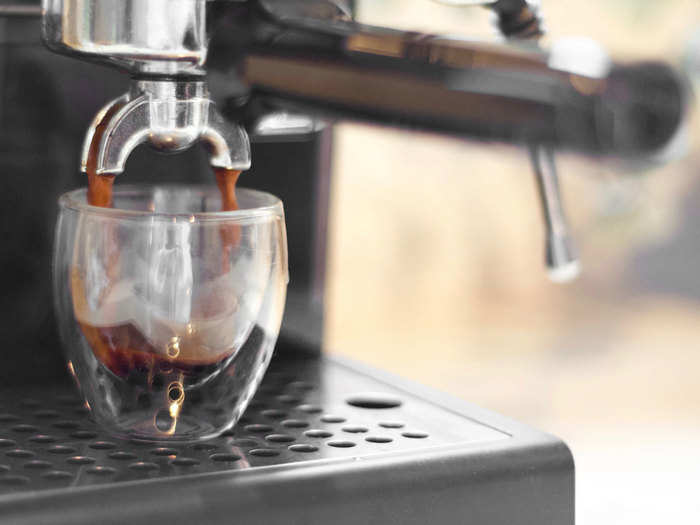
The Gaggia Classic Pro comes more or less set up for you. Make sure to clean out the water reservoir with soap before inserting it into place in the base of the machine (you can either remove it to fill or pour from the top, which is much more convenient than you might think).
Before you ever get going on prepping your shot, make sure to turn the power switch on. This gets the machine ready, but if you put the portafilter in during this stage, it'll warm that up, too. Espresso can turn sour when it's made cold, and if the scalding water from the boiler hits a cold portafilter, it'll likely come out like there's an overload of citrus in it. I like that, for some strange reason, but I'm weird in that way.
Next, you want to insert the portafilter basket that corresponds with the type of coffee you'll use (pre-ground and/or ESE pod, or freshly ground). Just make sure you use the little plastic riser piece if you're going to use one of the pressurized baskets.
Once your portafilter is ready to go, grind your coffee (if you're grinding your own) and load up the basket. Remember, grind size and tamping are two key components, and what works with one blend (or even batch) may not work with the next, so you'll have to clue in on what works each time. Same goes for brew time, but that's some next-level stuff that even most (relative) snobs like myself don't dare approach. Most espressos are going to require roughly 30-40 pounds of tamping pressure and between about 20 and 35 seconds of brew time, but while 35 seconds might nearly incinerate one type of coffee, it could be just right for another. Play around with dialing in your machine and your coffee. This should be part of the fun, after all.
Lock your portafilter into the brew head and, if the light beneath the brew switch is on, that means the machine is primed and ready. Flip it, and delight in the caramel-colored tonic that lackadaisically runs in two perfectly even streams into your demitasse. If the stream is but a slow trickle, your grind size (for that particular bean, remember) is either too fine, or you've tamped it with too much force. (Pro tip: use a small measuring cup or a demitasse with measurements on it to learn how much of an extraction you like.)
And, again, remember to have some fun and play around. Talk to any good barista and you'll be appalled at how much coffee they dump out just to get their machines and beans going right in the morning. Two-time UK Cup Tasting Champion (also 8th in the World Cup Tasting Championship in 2013) barista master Jason Gonzalez once told me that he often spends up to half an hour dialing shots every morning at his Burlington, VT espresso shop Onyx Tonics.
The frothing process
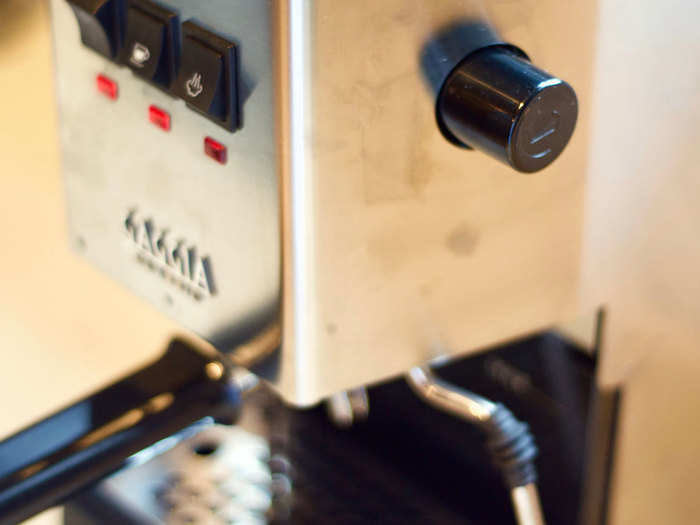
My favorite thing about the Gaggia Classic Pro, especially compared with similar machines, is that the steaming wand is manually adjustable (using the knob, right of center in the image above).
On some machines, like the Breville Barista Express, the steam is either on or off, and "on" produces a high-pitched screech that's reminiscent of a squealing swine. While testing in the office, you can only imagine the glares I received from the room next door, where an executive meeting was taking place.
This feature, I might add, is especially handy for frothing various sorts of milk, which all have their own consistencies and boiling points.
Potential cons
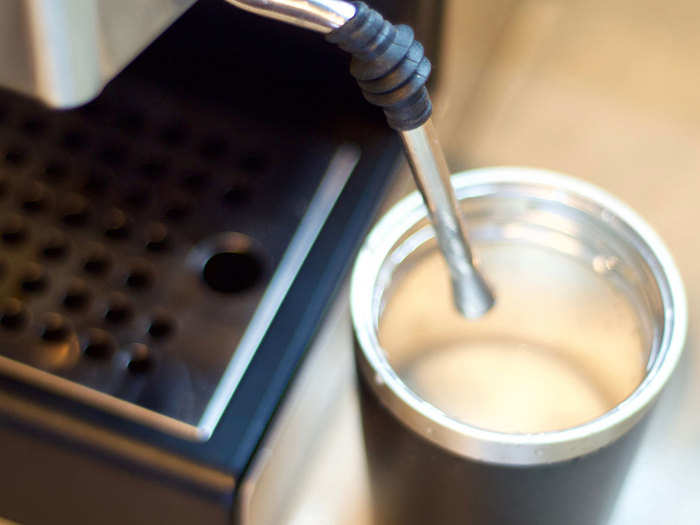
This, in effect, is a real, bona fide espresso machine. You have to remember to turn it off, and you don't want to have the brew and steam switches on at the same time, which is just part of the responsibility of owning a professional-grade espresso machine. You'll get used to it, and the budding barista within you will be all the better for it.
The only limitation of the steam wand, which is still my favorite out of any frother-equipped machines I've tested, is that it's not gimballed, like on the Breville Barista Express. You're confined to working with specific angles, and purging it of excess water requires either awkwardly placing a glass underneath or twisting it around so that it spills into the drip reservoir. In all, not a big deal.
The only true issue I have with the Gaggia Classic Pro, and the original line before it, is that the stainless steel housing has unfinished corners, leaving hazardously jagged edges. I've been testing one for a few weeks now, and twice (being hapless, mind you) I've missed locking in the portafilter and jammed my thumb right into one of those corners, taking a nice little bite of my knuckle. Be a little more careful than I am (not difficult) and you'll be fine. However, it's still worth minding.
The bottom line
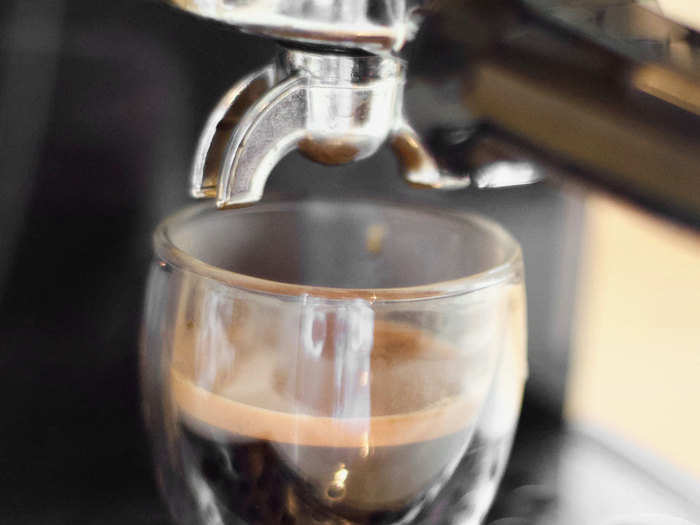
The aficionados at Whole Latte Love, whom I deem to be the ultimate authorities in all things espresso, say, "We love this machine," which, time and again, they've called "the best entry level [espresso] machine there is." Watch their video review of the Gaggia Classic Pro here.
It's a temperamental machine in comparison with something like the Breville Barista Express, but if you want to learn how to use a real espresso machine, and you either already have a good burr grinder or don't want an all-in-one maker for any other reason, this is a compact but powerful machine that will serve you well and last with the best of them.
Pros: Powerful, commercial-grade, compact, not terribly expensive
Cons: Misuse can cost you (i.e., it's not foolproof) but the new Pro model is slightly more user-friendly than the original, sharp edges on corners can cut your hands
Buy the Gaggia Classic Pro at Amazon for $449Popular Right Now
Popular Keywords
Advertisement